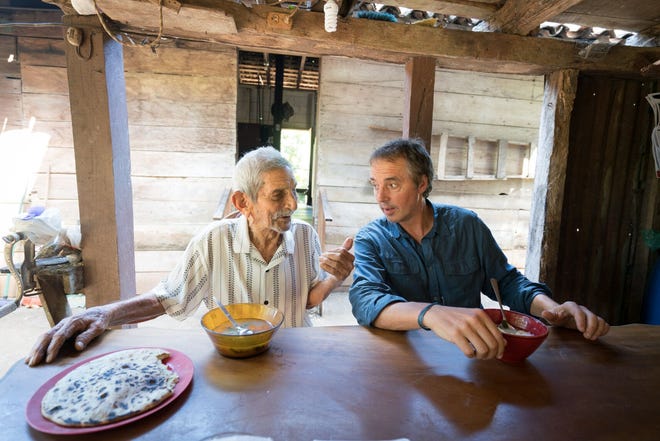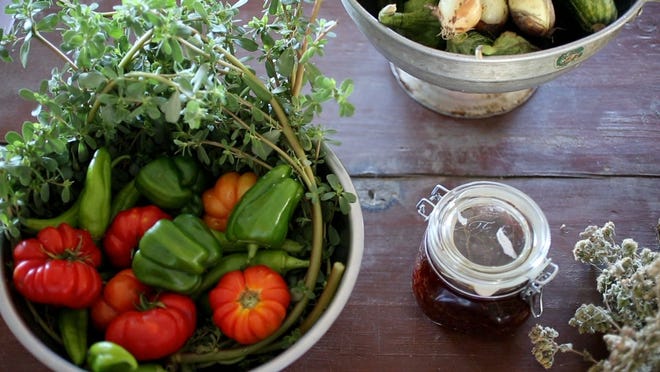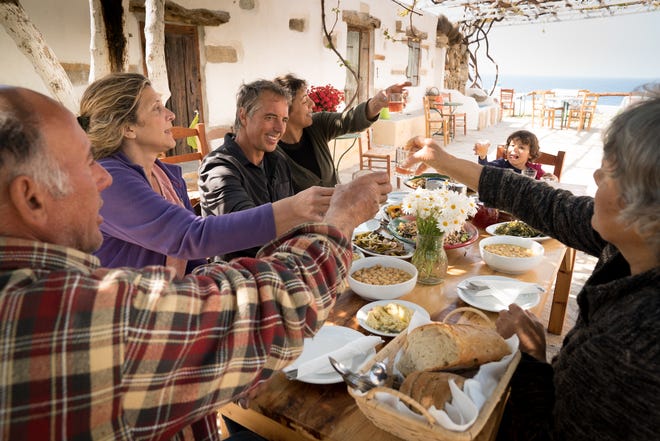A study released earlier this month reported that eating a single hot dog can take 36 minutes off of a human’s life. But what if there was a diet that aimed to add years?
The Blue Zones diet is based on the eating patterns of people living in Blue Zones – the parts of the world where people live the longest.
The diet was pioneered by Dan Buettner, a National Geographic fellow and bestselling author. In a span of about eight years, Buettner and a team of colleagues conducted research and discovered five pockets of the world that exhibited this outstanding longevity: Okinawa, Japan; Sardinia, Italy; Nicoya, Costa Rica; Icaria, Greece and Loma Linda, California.
Through an analysis of these communities’ dietary habits, they found people in these so-called “Blue Zones” were eating a mostly whole food and plant-based diet.
“The Blue Zones diet came along several years after the initial project in really piecing (it) together. If you want to know what 100-year-olds ate to live to be 100… you have to know what they’ve done most of their lives,” Buettner explains.
He’s been personally following the diet for about 10 years.
“I ate basically a standard American diet when I started, but it just became so glaringly clear that this way of eating is is yielding longevity. Also, it’s delicious,” he says.
He’s also gained newfound attention on TikTok for sharing info and tips about the diet. One video, where he talked about meat consumption in the Blue Zones, garnered nearly 200,000 views and more than 25,000 likes.
To skeptics, he says “you can do whatever you want, but the longest-lived people are eating this way.”
What is the Blue Zones diet?
The main pillars of every Blue Zones diet are:
- Whole grains, such as corn, wheat and rice
- Greens
- Tubers like sweet potatoes
- And beans, which Buettner describes as the “cornerstone of the diet.”
People living in the Blue Zones also eat some meat, on average about five times a month and fish once or twice a week. They also have a “little bit of sheep’s milk cheese or goat’s milk cheese, but very little sugar. Probably a quarter of the sugar that we eat, and almost no processed food.”

That also means no processed meats, which the World Health Organization also classifies as carcinogenic. The WHO defines processed meats as those that are “transformed through salting, curing, fermentation, smoking or other processes to enhance flavor or improve preservation.” Examples includes the aforementioned hot dogs as well as sausages, corned beef and beef jerky.
While the Blue Zones diet may consist of less meat and dairy than most Americans are used to eating, Buettner says he wouldn’t call it restrictive. Instead, he calls it putting a “plant slant” on your diet.
When he officially formulated the diet and created a Blue Zones cookbook, he decided to leave out meat and dairy altogether, explaining, “the more people can eat a whole food, plant-based diet, the better off they’re going to be.”
While this diet has similarities to the Mediterranean diet, it pulls from communities beyond this region and puts less of an emphasis on seafood. Additionally, the Blue Zones diet aims to go beyond just eating by also focusing on a way of life that encourages social connection and movement.
In addition to the hope of living a long life, Buettner says the diet can also help with other health issues.

In a 10-week challenge broadcast on the “Today” show in 2019, people who stuck to the diet yielded impressive results. One woman said she lost 12 pounds and lowered her cholesterol by 22 points. Another lost 17 pounds and said she felt “happy (and) energized,” while a third woman lost 37 pounds.
“While the women we talked to saw the most dramatic change, everyone who stuck with the program for three months also reported weight loss,” anchor Maria Shriver said in the segment. “But I think the thing that is the most exciting to me is that they all reported emotional well-being went up.”
Going meatless or reducing meat intake can also help lower cholesterol and reduce the risk for cardiovascular disease, according to the American Heart Association.
The diet can also help keep you feeling full longer. A 2016 study comparing meals with vegetable protein sources versus animal protein found that satiety was higher after eating legumes such as beans and peas than meat.
“These fiber-filled sources are known to improve satiety, which can help manage our weight,” explains Ashley Baumohl, assistant clinical nutrition manager with Lenox Hill Hospital in New York.
Plant-based diets can also help support bowel regularity and an increase in fiber is “directly associated with reducing risk for colon cancer and breast cancer,” she says.
“So there are a lot of benefits in choosing these foods as our primary source of nutrition.”
Tips for starting a Blue Zones diet
Diets can be hard to stick to on their own, Buetter says, so he suggests shaping your environment to make this way of eating easy.
“Most of us are on a ‘see-food’ diet – so if you’re putting that junk food away and you put in a big, beautiful fruit bowl in the middle of your table, you’re way more likely to eat the fruit,” he says.

People can be influential too, and surrounding yourself with people who also eat this way will help, he says, just like in the communities that the diet originates.
“One of the best things to do is to build your social network so you have a couple other people eat this way,” he says.
He also suggests taking time to learn some recipes you love, because taste will also be a factor in what you decide to eat.
“People eat this way for, basically, three different reasons. Number one, it’ll improve my health. Number two, it’s good for the environment. And number three, it reduces animal cruelty,” he says. “(But) people want to eat what’s delicious right now, so the most important ingredient is taste. So, if you can find a couple of handfuls of recipes that you and your family love… you’re gonna want to eat it because it’s pleasurable.”
Baumohl agrees it helps to “get into the groove” of making new recipes that you find appetizing, but know that switching to plant-based when you’re used to a more meat-filled diet can involve a learning curve.
“(It) requires some education – how to make it flavorful without adding in too much sodium, and what can we add in that is going to give us a greater variety of nutrients and make it taste good?” she says. “It that takes a lot of practice.”
She also encourages people to make sure they’re getting enough nutrients.
“It has to be a very intentional change,” Baumohl explains. “There’s definitely ways to get (plant-based protein), but… these aren’t going to be as protein-dense are a Greek yogurt or three ounces of chicken or fish.”
She also suggests adjusting any diet recommendations to your specific needs.
“Everyone is so individualized and has different levels of activity and different mental conditions and different things going on with their body where they might need more or less of something,” she says. “I just want to make people aware of that.”
More:Do you need to take pre-workout powders? Experts weigh in.
More:On TikTok, people are eating Rice Krispies Treats before working out. Is it effective?
